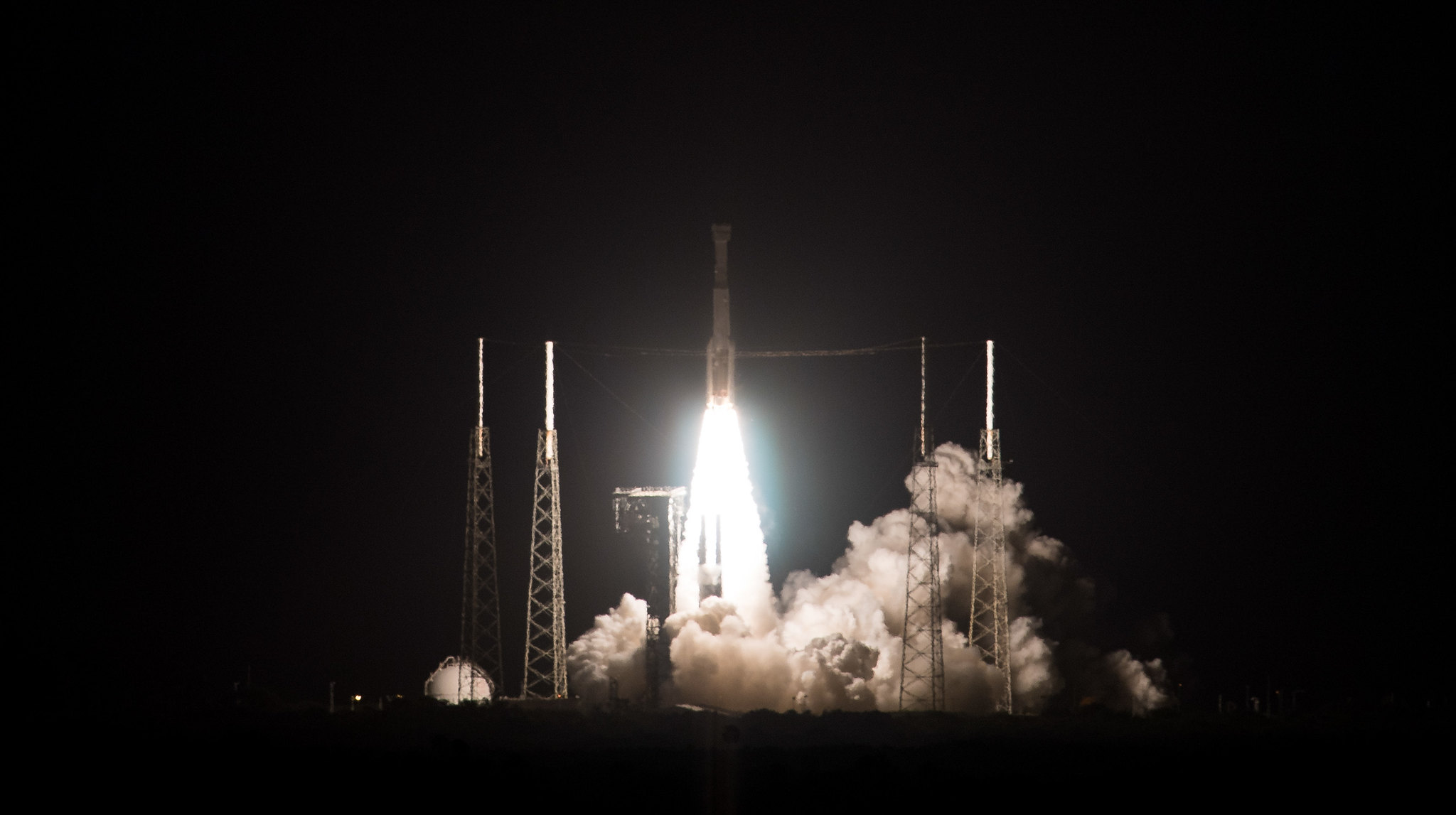Stay Up to Date
Submit your email address to receive the latest industry and Aerospace America news.
Uncrewed test to space station aborted
UPDATE: The Boeing CST-100 Starliner capsule landed at 7:58 a.m. ET Sunday at White Sands Missile Range in New Mexico. All three main parachutes deployed.
With the International Space Station no longer in reach of Boeing’s Starliner capsule, the company will attempt to bring the spacecraft home Sunday and turn a failure into proof that the capsule design would have kept a crew safe during a malfunction had one been aboard.
After a normal launch this morning at 6:36 a.m. ET, Starliner was supposed to dock with the space station on Saturday with 270 kilograms of cargo and spend a week there before returning to Earth. The uncrewed mission with a test dummy aboard was meant to demonstrate the design’s safety through all phases of flight.
But Starliner, one of two designs funded by NASA under its Commercial Crew program, never made it to ISS.
The trouble arose 30 minutes after a United Launch Alliance Atlas V blasted the capsule into space from Cape Canaveral Air Force Station. After separating from the rocket, Starliner should have fired its 20 Orbital Maneuvering and Attitude Control thrusters in an orbital insertion burn, meant to put the spacecraft on a path to intersect with the space station. But the Mission Elapsed Time clock in the capsule showed an incorrect time, and the thrusters did not fire, NASA Administrator Jim Bridenstine told reporters during a post-launch press conference, according to a livestream.
“When the timing was off, the spacecraft didn’t know exactly where it was in the sequence,” he said.
The onboard computer launched a series of commands as though the maneuver toward the space station had already been carried out. It fired a smaller set of thrusters to steady the spacecraft as if it were on course to the station.
Minutes after the clock error, NASA and Boeing flight controllers at mission control in Houston scrambled to command Starliner to do the correct maneuver, but the spacecraft didn’t get the signal in time due to a gap in coverage by NASA’s Tracking and Data Relay Satellites.
By then, another attempt to reach ISS was “not worth doing given the amount of fuel that we burned,” Bridenstine said.
Instead, NASA and Boeing plan to bring Starliner home in 48 hours. “Odds are high” the spacecraft will be successfully recovered, said Jim Chilton, head of Boeing’s Space and Launch division.
“We ended up in a place in space we didn’t expect to be, but that’s not a hardware issue,” he said, adding that Boeing and NASA are still figuring out “what test objectives can be achieved” within that time frame.
With the root cause of the clock error still unclear, the priority turned to bringing Starliner home. “We’ll have to go look forward and go look at the deorbit burn and reentry to make sure there’s no problem there,” said NASA’s Steve Stich, the deputy manager of flight development and operations for Commercial Crew.
Flight controllers were preparing to send two orbit-raising commands to Starliner on Friday afternoon. These thruster firings should put the capsule in the correct orientation to land under its parachutes about 8 a.m. ET Sunday at White Sands Missile Range in New Mexico.
As for whether a Starliner will fly a crew to ISS in the first part of 2020, as NASA had planned, Stich said that depends on what the test data shows. For this uncrewed flight, Starliner’s only passenger was Rosie, a sensor-studded test dummy that was to record the G-forces a crew would experience.
Bridenstine said it’s “too early” to decide whether another uncrewed Starliner flight would be needed, but left open the possibility that Boeing might proceed directly to a flight to ISS with three astronauts.
“The space shuttle never flew autonomous,” Bridenstine said, referring to the fact the first space shuttle launch carried astronauts. “So the answer is yes. We built the space station with the space shuttles. And every single one of those missions was crewed.”
Stay Up to Date
Submit your email address to receive the latest industry and Aerospace America news.




